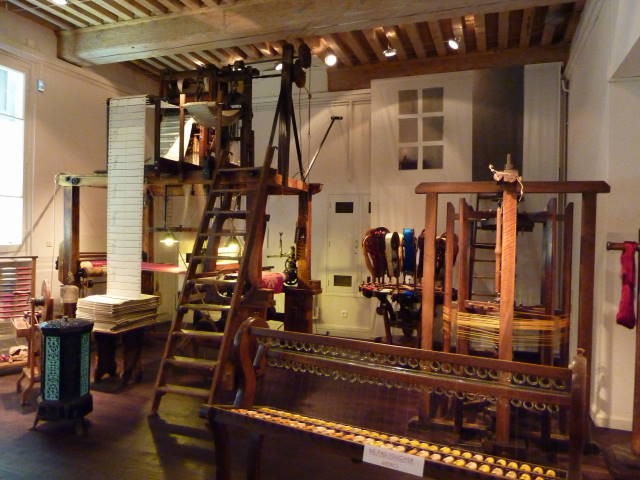I'm officially dedicating this post to my roommate, who visited this district for her summer school project about five times and dragged me with her (willingly) twice - and yet I've never managed to do a blog post about this lovely area of Lyon! Today my family went to the Maison de Canuts, which were silk manufacturers, and got a really interesting tour of how silk was manufactured there starting from the 18th century up until today. Just a warning, it's (yet again) all in french, but if you speak it, a tour in the lovely museum surely can't be missed!
We started our toor with a look at the weaving looms, which were semi-mechanical and actually a basis for early computer programs, as they functioned on the same principle (a punch card system). The weaver had to be very knowledgeable on how to operate the loom, as they couldn't see what they were weaving and had to learn the patters beforehand. They owned the looms themselves and had a whole small business under them, even though they got paid very little for their work. This led to several revolts, which finally, in 1863, led to better payment. At first, they didn't even know how much they were going to get paid while they were making the silk, only when it was finished and they sold it they were told the price! In the end, they managed to obtain fixed rates for 1,20 metres of material (the unit back then), even though they were still very meagre.
The second half of the tour consisted of learning about how the silk itself is produced. I was very surprised that the ancient Chinese empire kept the knowledge of the silk-worms to themselves for about 2000 years (!) and only sold the finished fabric through the eponymous silk road. Finally, emperor Justinian of the Roman Empire send early industrial spies to uncover the secret, and the silk worms came to Europe. After the eggs are laid, the worms consume about 1 ton of fresh mulberry leaves for 100g of silk thread, so keep your trees close by ... When they are all cocooned in, you boil the larvae, killing them, and put them into a very hot bath to obtain the silk, which is usually used for single threads since its so strong, unlike other materials which you have to thread together. What I found really positive about the guided tour was that he encouraged us to shop sustainably and also reminded us that the social problems that Lyon might have had with their silk production in the 19th century have now just been shipped off to other countries. "Buy better and less!"